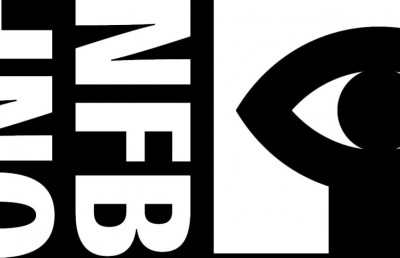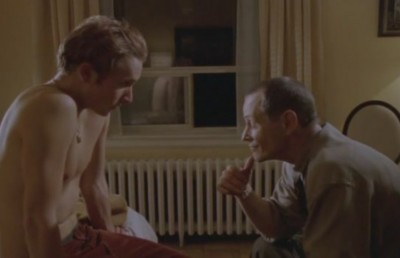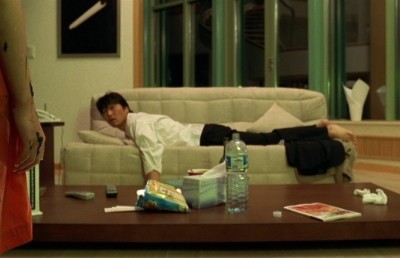Sure Seaters: The Emergence of Art House Cinema

Sure Seaters: The Emergence of Art House Cinema by Barbara Wilinsky
Minneapolis: Minnesota UP, 2001
To paraphrase Robert Morley in Beat the Devil (1953), every assay into cultural studies is a guinea in the bank of cultural capital. Raymond Williams’ views on cultural materialism are still generating interest in this bank, and Barbara Wilinsky’s Sure Seaters: The Emergence of Art House Cinema is one receipt of this transaction. Wilinsky’s tidy historical volume, an elongation of her 1997 dissertation, is bookended with a distinction made by Williams between oppositional and alternative culture: the former is incompatible with and contrary to the dominant culture, while the latter seeks merely to be left alone. 1 . Art house cinema, it is argued, is alternative and quietist, offering no threat to the governing practices of representation. This is the view that informs the book and guides a reading of its otherwise straightforward economic history, from the beginnings of film to art house cinema, and on to what we have (whatever we have) now.

Just what art house cinema was then, post-war, when it properly came about, is still in dispute. Using the Italian neorealist Open City (1945), the race problem “passing” film Lost Boundaries (1949), and the Ealing comedy Tight Little Island (1949, erstwhile Whisky Galore!) as test cases—which she continues to use throughout—Wilinksy offers a literature review of how art house cinema has been recognised thus far, vacillating between ex post facto academic definitions and utilitarian industry categorisations. She considers art house cinema by the varying characteristics proposed: its formal property of ambiguity, its particularised production habitudes (national, industrial), and its commercial realities. Deciding on all and none of these definitions, she is correctly inconclusive, although she does emphasise art house cinema’s oft–ignored profitable intent and precarious existence “somewhere in between mainstream cinema and experimental, avant–garde, [and] modernist cinema […] different, but not too different. 2 The pervading cynicism encountered in Sure Seaters is in fact quite refreshingly non–adulatory, buffered by what seems a sincere enjoyment of the films themselves and the environs in which they screened. An abundance of detail is provided on such minutiae as the quality of paper early art house programs were printed on (“ranging from heavy -stock glossy paper to plain copy paper” 3 , what the refreshment options were like (certainly not popcorn—coffee and Danishes were a more probable option), who designed the foyer in any given theatre (Modernists all), and so forth. Tactility is paramount, and there are select pictures included sparingly. Much of this information Wilinsky obtained through interviews with those who ran the original art houses, and she places their endeavour within a wider, –cinematic milieu dating from the “little cinema” movement f the ’20s, through Amos “Film–as–a–Subversive–Art” Vogel and Cinema 16, and on to the Landmark Theatre Corporation, which operates fifty–seven art houses—better called art outlets?—in the US today. in her readings, and lucid on history and screening practice, Wilinsky is equally controlled and acerbic on class—a debt to the Marxist legacy of Willams (and, elsewhere in the book, Adorno and Horkheimer). In a decidedly auspicious archival find, she describes a sublimely oblivious Life magazine chart from 1949 that categorises:
different cultural forms and practices as high–brow, upper middlebrow, lower middlebrow, and lowbrow. […I]n the category of “Entertainment,” Life’s chart lists ballet as a highbrow cultural pursuit, theater as an upper–middlebrow activity, musical extravaganza films as a lower–middlebrow entertainment and western movies as an activity for lowbrows. 4
The Life chart proceeds to ascribe appropriate social causes to the respective brows (art for high, Planned Parenthood for upper–middle, and so on down the slope). Wilinsky continues, “Basically, Life offered a chart instructing readers how to behave to increase their cultural prestige; 4 the post–war art house cinema, she argues, is advertised as high to the middles. 6
A commercial conundrum arises in this marketing situation that intrigues Wilinsky: how does one reconcile the two “conflicting interests [of] retaining the prestigious appeal of films and making them more popular and accessible? 7 The Book-of-the-Month Club provides a historic resolution to this problem, as it was already twenty-five years old by the time art house cinemas came about. Classical and highbrow references + discounts = customers. (To this equation the cinema, or its advertisers, added luridness.) The appearance of high culture was perhaps easiest to replicate; and when the films did not provide the type of cultural cachet expected of European product, there was always the cinema manager, described by one theatre runner as, ideally, “a man of culture, with some knowledge of letters, music and art; he will wear slacks and sport jackets and will smoke a pipe. 8 Discounts were simple, too, and sometimes provided on a subscription basis similar to the Month Club. The Foreign Films Movie Club appealed to middlebrows “interested in increasing [their] cultural capital with the least outlay of economic capital,” and for a two–dollar membership received discounts to established art houses. 9 Jean Cocteau was an honorary member of the Club, and an unwitting purveyor of the combination of high and risqué art well suited to the marketing.
Luridness did not really become accurately associated with art house cinemas until the ’60s, although they were always accused of it. This is not to say that art houses did not use sex to sell films—an advertisement for Open City in 1946 ran with the now incomprehensibly sensational tag line, “SAVAGE ORGY OF LUST”—they did use sex, just no more than Hollywood. 10 Interestingly, Wilinsky draws a parallel between the unavailability of affordable Hollywood product and the rise of European art films in the ’40s and ’50s and, in the ’60s and ’70s, the unavailability of affordable product generally and the rise of sexploitation. While she does not entirely correlate the market shortage to the concurrent artistic and commercial sphere, she argues persuasively that the lack had an impact. In her conclusion, Wilinsky mourns how easily alternative art house fare (in the Williams’ sense) has been co–opted and economically dominated by the Hollywood machine. One needs to look further than the art houses to see equivalently alternative films to those screened post–war and further still to find oppositional films. But this is not news. What has effectively been accomplished in Sure Seaters is a subtle summary of the complex economic situation in post–war art house fare and a concomitant illumination of the cultural hierarchies of the time. These hierarchies were involuted and varied, and they allowed for the titular phrase sure seaters to swing radically in meaning from the beginning of the 1940s to the end. Initially referring to art house theatres in which patrons would be sure to get a seat because no one was interested in the films, by the end of the decade sure seaters meant that managers could assuredly fill all their seats.
Priced at $18.95, printed on a thick stock with resilient binding, and best enjoyed with coffee (not popcorn), Sure Seaters is worth – surely – a guinea in a reader’s own bank of cultural capital.
Notes
- Raymond Williams. “Base and Superstructure in Marxist Cultural Theory.”New Left Review 82 (November/December 1973), 10. ↩
- Barbara Wilinsky. Sure Seaters: The Emergence of Art House Cinema. Minneapolis: Minnesota UP, 2001. 39. ↩
- Ibid., 115. ↩
- Ibid., 86. ↩
- Ibid., 86. ↩
- This gradient terrain of brows is an American equivalent of the contagious British U and non–U linguistic demarcations put forward by Alan Ross and popularised by Nancy Mitford. U and non–U came to refer to wealth, education, and culture—“polo is thoroughly U,” one might say, while “bowling is hopelessly non–U.” ↩
- Wilinsky, 99. ↩
- Ibid., 104. ↩
- Ibid., 96. Wilinsky confines her study mainly to theatres in New York and Chicago. ↩
- Ibid., 126. Open City is noted to have run for one hundred weeks in Times Square. ↩













